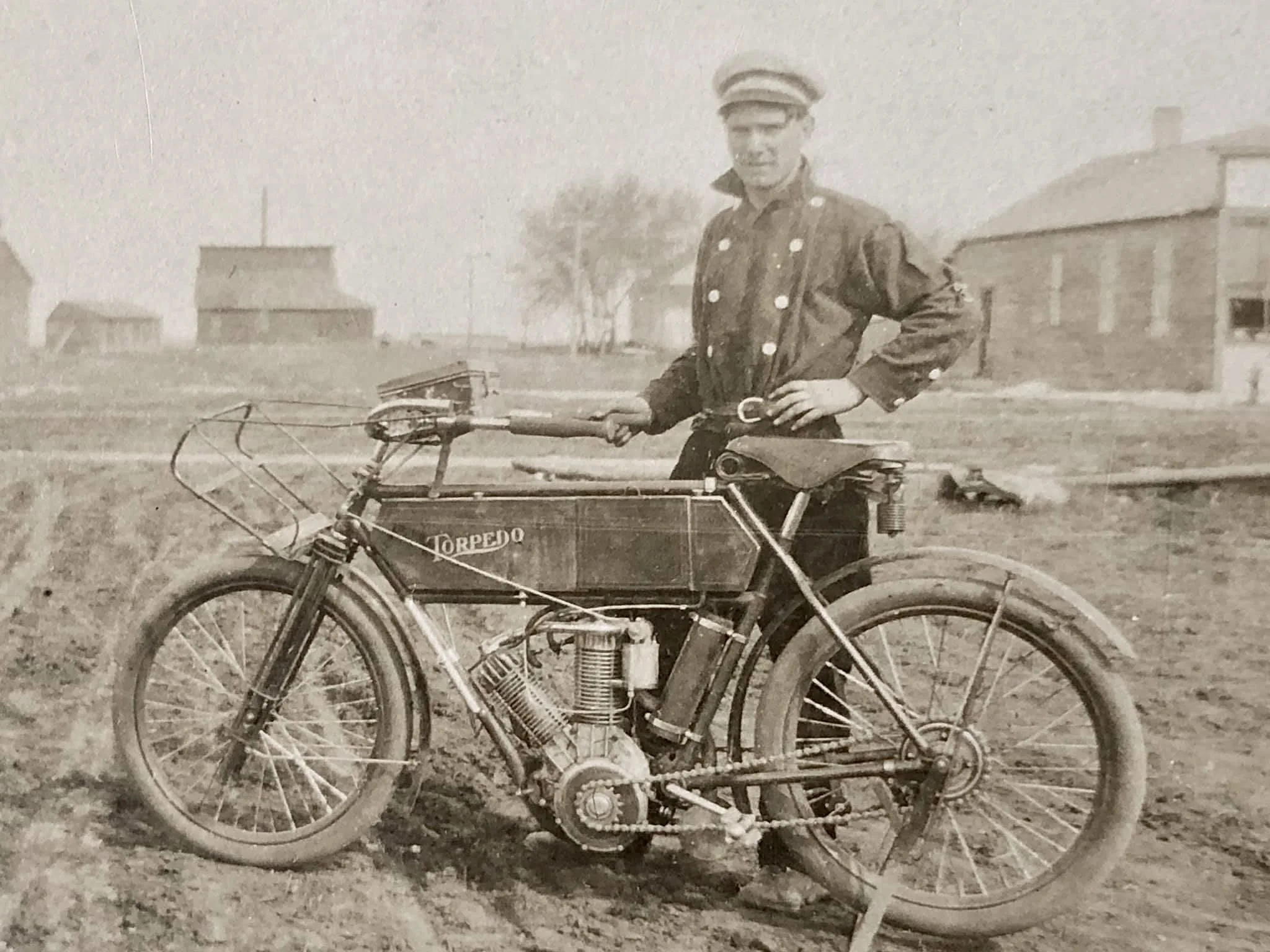This strapping gent poses proudly behind his trusty Hornecker Torpedo, an exceedingly rare American marque that at one point was heralded as one of the best machines in the country.
Founded in 1906 by George Hornecker, the Hornecker Motor Manufacturing Company began producing motorcycles from its factory in Whiting, Indiana, utilizing engines produced under the Hedstrom-Thor license. Hornecker was the son of German immigrants, initially working for Standard Oil at the turn of the 20th century. He soon parlayed his efforts into a thriving hardware store in Whiting, building upon his success by operating the town’s first telephone service and becoming a stakeholder in the First National Bank. Hornecker later served on the city council and still found the time to work as a volunteer firefighter before turning his attention to the motoring business.
In 1906 Hornecker built a two-story factory in Whiting, selling and servicing Rambler automobiles and venturing into the emerging motorcycle industry. Branded with Torpedo across the tank, the first machines to roll out of the factory were similar in design to early Indian and Thor camelback machines, with the single-cylinder engines acting as a stressed member of a diamond-frame chassis and the fuel stored in a tank over the rear fender. However, Hornecker soon introduced new styling and features that would set his machine apart from the crowd.
Torpedo motorcycles became some of the first in the country to offer twist-grip controls on the handlebars to manage both throttle and spark advance. An oblong hexagonal fuel tank was fitted, touted as the signature Torpedo “4-in-1” fuel tank to house fluids and ample storage. Most notably, Hornecker developed a telescopic spring fork to smooth out the ride, offering a whopping 1.5 inches of front suspension. On select models, a rear spring assembly was added to the frame, making the Torpedo one of the first fully suspended motorcycles on the market.
At only $275 for the twin model, sales were strong, as was praise from the industry at large. Solid performances in early competitions further bolstered Torpedo’s reputation as the marque took top places in the national F.A.M. 300-mile endurance race and the 1908 Chicago Examiner Cup.
Tragically, that same year Hornecker’s wife, Clara, took ill and was hospitalized for the majority of 1908. With mounting medical bills and his wife recovering but requiring a wheelchair for the rest of her days, Hornecker had little option but to move his family of 5 back to his hometown of Genesco, Illinois, in 1909. The Whiting factory was closed, and a new facility was built in Genesco. The Torpedo was built around a new Thor engine since the earlier Hedstrom designs had become unavailable. Still, the days of the mighty Torpedo were numbered. Despite having made a motorcycle with a strong reputation and apparent demand, few Torpedos were produced in 1909. Hornecker ultimately declared bankruptcy in early 1911, the brand fading from memory in the hallowed days of the Big Three. Hornecker became a furniture salesman, living to the ripe old age of 80 when he passed in 1953, but like so many pioneers, his contribution to the earliest days of American motorcycle culture warrants more praise and appreciation than what history has lent.
Noting the unique rack on the front of this machine, it is most likely that our dapper Torpedo-straddling gent is a postman serving the 329 residents of Wentworth, South Dakota, in 1910 when this photo was taken.

